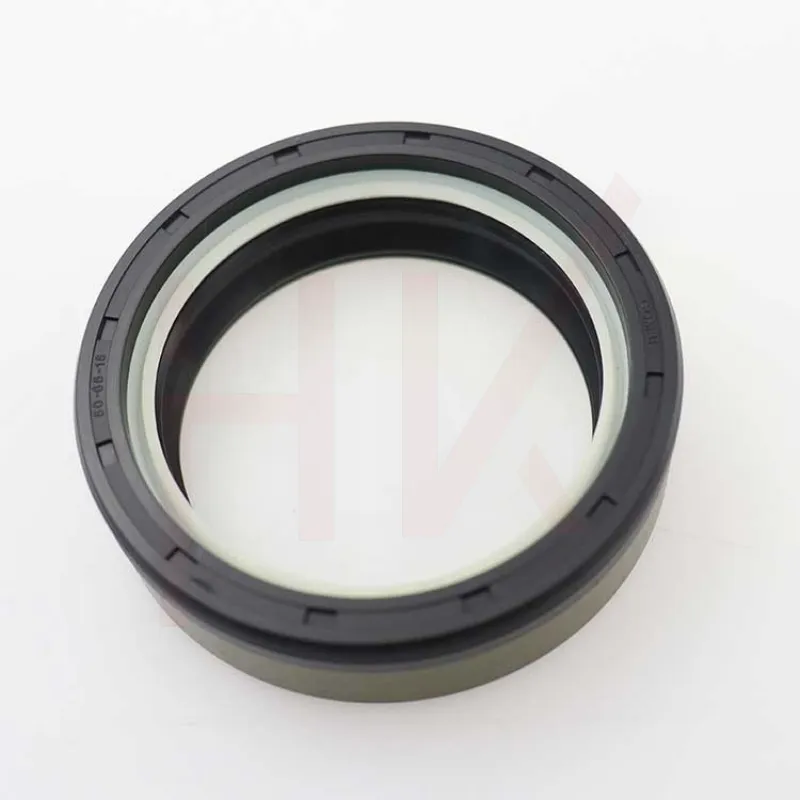8 月 . 09, 2024 01:20 Back to list
Exploring Various Types of Hydraulic Oil Seals for Enhanced Machinery Performance and Reliability
Understanding Hydraulic Oil Seal Types
Hydraulic oil seals play a crucial role in the functioning of hydraulic systems, ensuring the efficient operation of machinery and equipment. These seals prevent the leakage of hydraulic fluids and protect sensitive components from contaminants, thereby enhancing the longevity of the system. There are various types of hydraulic oil seals, each designed to meet specific requirements based on their application, pressure, temperature, and environment. In this article, we will explore the most common types of hydraulic oil seals and their characteristics.
1. O-Rings
O-rings are one of the simplest and most widely used types of hydraulic seals. Their circular shape allows them to fit snugly into a groove and seal the space between two mating surfaces. O-rings are available in different materials such as rubber, polyurethane, and fluorocarbon, which can accommodate a broad range of temperatures and chemicals. They are often used in fittings, cylinders, and pumps due to their versatility and cost-effectiveness.
2. Lip Seals
Lip seals, also known as shaft seals or rotary seals, feature a flexible lip that contacts the shaft surface. The design of the lip creates a barrier, preventing the escape of hydraulic fluid while also keeping dirt and moisture out. Lip seals are commonly found in rotating equipment, such as hydraulic motors and pumps. They provide effective sealing under dynamic conditions and are available in various materials to resist wear and environmental factors.
3. U-Cups
hydraulic oil seal types

U-cups, or U-seals, are designed for use in reciprocating applications, where the seal needs to maintain contact with a piston or rod moving back and forth. The U-shaped design allows the seal to create a tight fit, reducing friction and wear. U-cups are typically made from elastomeric materials and are effective in both static and dynamic sealing situations. They are well-suited for hydraulic cylinders and other applications requiring resilience and flexibility.
4. V-Seals and Wiper Seals
V-seals and wiper seals are primarily used for dust protection and are often the first line of defense in preventing contaminants from entering the hydraulic system. V-seals have a distinctive V-shaped design that allows them to maintain contact with the shaft while also deflecting dirt and debris. Wiper seals, on the other hand, are designed to remove contaminants from the surface of the rod or shaft before they can enter the main sealing element. These seals are crucial in extending the life of hydraulic components by maintaining cleanliness.
5. Seal Kits
In many hydraulic systems, it is practical to utilize seal kits that include various types of seals tailored for specific applications. These kits often include combinations of O-rings, lip seals, and wiper seals designed to work together efficiently. Seal kits simplify the maintenance process, ensuring that technicians have all the necessary components to perform repairs and replacements effectively.
Conclusion
Choosing the correct hydraulic oil seal is essential for optimizing the performance and longevity of hydraulic systems. Understanding the different types of seals available—O-rings, lip seals, U-cups, V-seals, and complete seal kits—enables engineers and maintenance personnel to make informed decisions that cater to their specific needs. By selecting the right seal type based on the operating conditions and environmental factors, users can minimize leakage, reduce downtime, and enhance overall system reliability. Proper maintenance and regular inspection of these seals will go a long way in ensuring the efficient operation of hydraulic machinery, ultimately contributing to the success of industrial and construction operations.
-
The Power of Advanced Sealing: High-Pressure Solutions for Modern Machinery
NewsOct.29,2024
-
Optimizing Machinery with High-Performance Oil Seals
NewsOct.29,2024
-
Maximizing Machinery Efficiency with Advanced Oil Seals
NewsOct.29,2024
-
Ensuring Equipment Longevity with Quality Oil Seals
NewsOct.29,2024
-
Enhance Equipment Performance with Quality Oil Seals
NewsOct.29,2024
-
Custom Oil Seals for Specialized Machinery Needs
NewsOct.29,2024
-
The Role of Wiper Seals in Dust Sealing and Oil Protection
NewsOct.20,2024
Products categories
















